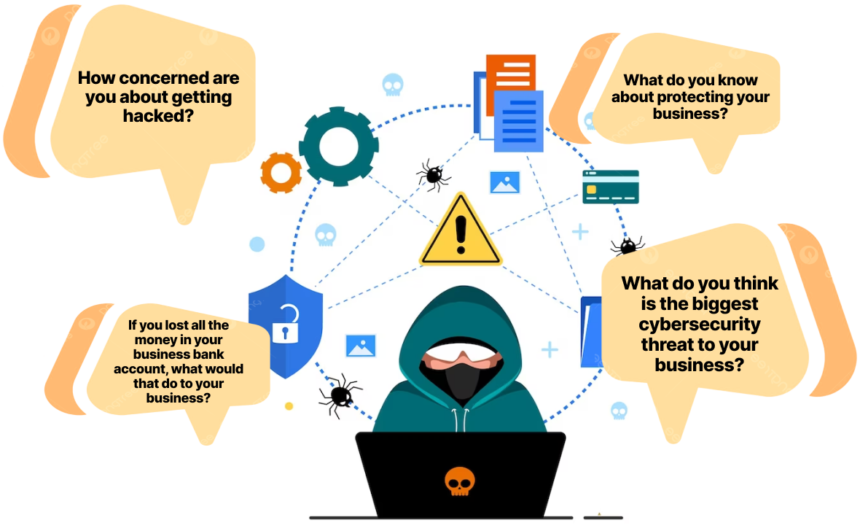When was the last time you seriously thought about the safety of your data? Sure, you might have a firewall in place, an antivirus subscription running in the background, or a password manager to keep track of your logins. But here’s the real question: is that enough? Cyber threats aren’t static—they evolve. And the only way to truly know if your defences are holding up is through a cybersecurity assessment.
What Is a Cybersecurity Assessment?
A cybersecurity assessment is like a comprehensive health check-up for your digital environment. It evaluates your systems, processes, and policies to identify weaknesses that cybercriminals could exploit. It’s not just about spotting flaws; it’s about ensuring your organization has the right defences in place to handle modern threats.
Think of it as stepping back and asking, “Where are we exposed?” This isn’t something you should leave to guesswork.
Why You Need One Now
Cybersecurity isn’t just about preventing attacks—it’s about staying prepared. You don’t want to wait until there’s a breach to discover that your system had a glaring vulnerability. A thorough assessment highlights issues before they become problems.
And it’s not just about dodging financial losses from an attack (though that’s a big deal). There are other major benefits:
- Understanding compliance risks – Are you meeting all industry regulations and legal requirements?
- Evaluating employee behaviours – Are your team members unknowingly putting your systems at risk?
- Testing your incident response – Could you handle a breach effectively if it happened tomorrow?
If any of these questions make you pause, it’s time to consider an assessment.
What Does a Cybersecurity Assessment Cover?
You might be wondering, “What exactly do they look at during an assessment?” Let’s break it down.
- Network Security
This involves testing your network for vulnerabilities like open ports, weak encryption, or outdated software. Are hackers able to sneak in undetected? - Endpoint Protection
Every device connected to your network is a potential entry point. This step checks if your laptops, smartphones, and servers are secure. - Access Management
Who has access to what? The assessment ensures that employees only have access to the systems and data they absolutely need, minimizing insider risks. - Policy and Procedure Review
Do you have clear, up-to-date cybersecurity policies? This part checks if your guidelines are practical and being followed. - Incident Response Readiness
An assessment tests your ability to detect, respond to, and recover from a breach. It’s not just about technology; it’s about how quickly your team can act.
These are just the broad strokes. Depending on your organization, there may be more specialized areas reviewed, but these core components are universal.
Surprising Vulnerabilities You May Not Know About
One of the biggest takeaways from a cybersecurity assessment is discovering gaps you didn’t even know existed. These are the kinds of vulnerabilities that often shock organizations:
- Shadow IT – Employees sometimes use unauthorized apps or tools to “get the job done.” These apps often bypass your security protocols, creating hidden risks.
- Weak Third-Party Security – If vendors or partners have access to your systems, their security lapses can become your problem.
- Misconfigured Cloud Services – Moving to the cloud is great, but poor configurations can leave sensitive data exposed.
Without an assessment, these issues can easily go unnoticed—until they’re exploited.
How a Cybersecurity Assessment Saves You Money
Investing in cybersecurity might feel like a cost, but here’s the truth: it’s a lot cheaper than dealing with a breach. The average data breach in the US costs organizations millions of dollars. Between fines, downtime, lost business, and damage to your reputation, the price is staggering.
A cybersecurity assessment identifies these risks early, giving you the chance to address them proactively. It’s a small investment compared to the financial (and emotional) toll of a major attack.
When Should You Schedule an Assessment?
Here’s the thing: cybersecurity assessments aren’t one-and-done. Cyber threats are constantly changing, so your defences need regular check-ins to keep up.
Consider scheduling an assessment:
- Annually – This ensures your security keeps pace with new threats.
- After major changes – Migrated to the cloud? Adopted new tools? Any major tech shift warrants a review.
- When entering new industries – Expanding into a regulated market? You’ll need to meet its specific security standards.
In short, if your organization is growing or evolving, so should your approach to cybersecurity.
Taking Action: What’s Next?
If you’re realizing a cybersecurity assessment might be overdue, you’re not alone. Many organizations assume they’re fine until something forces them to look closer. The good news? Taking action now can save you a world of trouble down the road.
Start by identifying a trusted cybersecurity professional or firm to perform the assessment. Look for one with a strong track record in your industry, as they’ll understand the specific threats you face.
Once the assessment is complete, you’ll get a detailed report of the findings along with actionable recommendations. Don’t just file this away. Use it as a roadmap to strengthen your defences, train your team, and improve your overall security posture.
Protect Now or Pay Later
Cybersecurity isn’t optional—it’s essential. The risks are real, but the tools to protect yourself are within reach. A cybersecurity assessment gives you clarity, confidence, and the ability to stay ahead of threats.
So, think about your systems right now. Are you certain they’re as secure as they should be? If you’re not 100% sure, it’s time to find out. Because when it comes to protecting your data, guessing isn’t an option.


